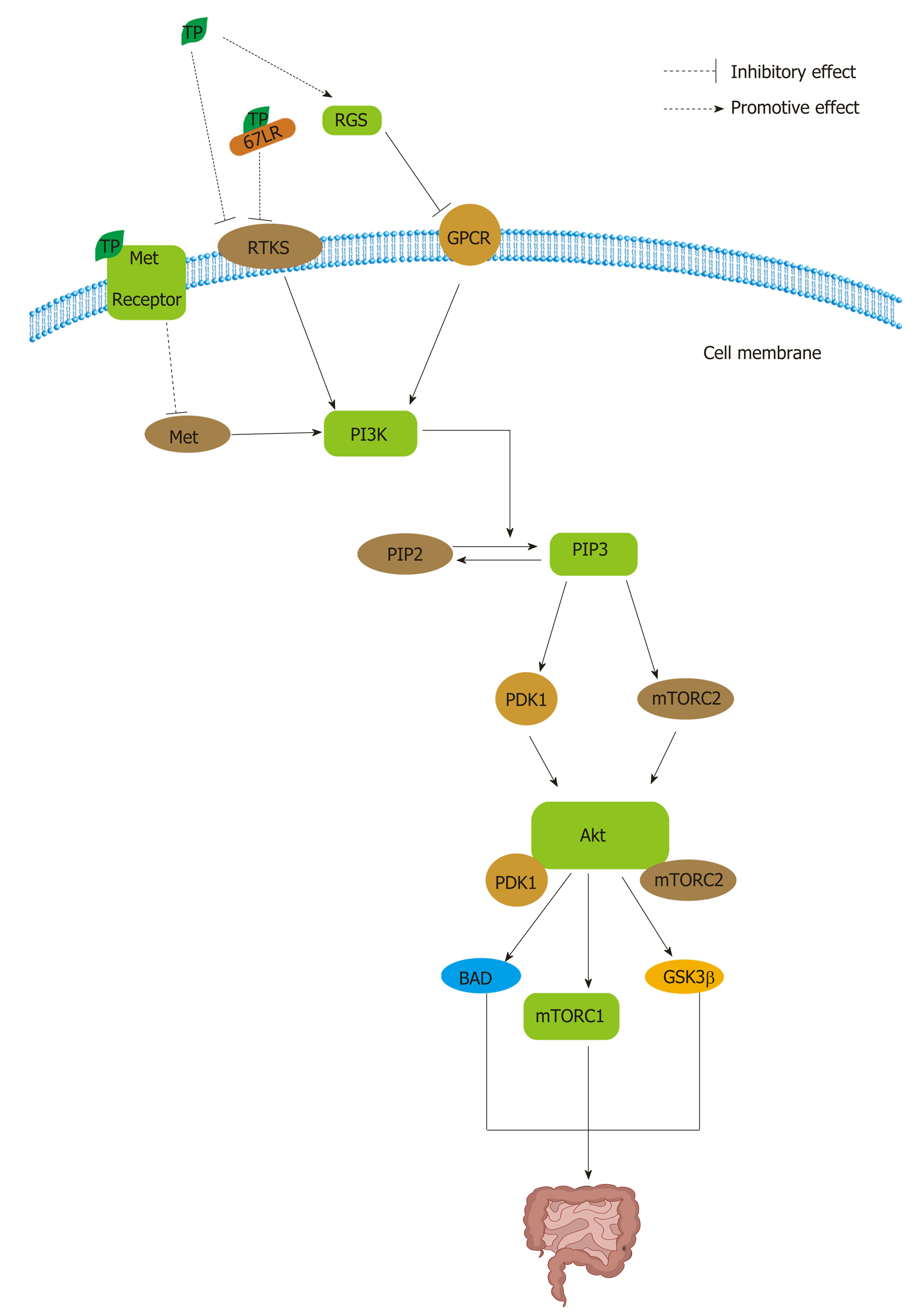Copyright
©The Author(s) 2020.
World J Gastroenterol. Feb 14, 2020; 26(6): 562-597
Published online Feb 14, 2020. doi: 10.3748/wjg.v26.i6.562
Published online Feb 14, 2020. doi: 10.3748/wjg.v26.i6.562
Figure 5 The class I PI3Ks activated by receptor tyrosine kinases, such as epidermal growth factor receptor, can phosphorylate PI 4,5-bisphosphate to yield PI 3,4,5-triphosphate in the cell membrane[203].
The activation of PI3K results in the phosphorylation of two key residues on Akt1, T308 in the activation loop (or T-loop) of the catalytic protein kinase core and S473 in a C-terminal hydrophobic motif[201]. PDK1 at T308 and mTOR complex 2 (mTORC2) at S473 can activate Akt[203]. Phosphorylated Akt activates a multitude of downstream targets, such as the mTOR complex 1 (mTORC1), BAD, GSK3β. Tea polyphenols (TPs) can inhibit PI3K/Akt signaling by interrupting receptor tyrosine kinases (RTKs) and G protein-coupled receptors. TPs can inhibit RTKs not only directly but also indirectly by binding to 67 kDa laminin receptor. Moreover, TPs can activate the regulators of G protein signaling to negatively regulate the pathway. In addition, TPs can bind to the Met receptor to inhibit PI3K activation. PIP2: PI 4,5-bisphosphate; PIP3: PI 3,4,5-triphosphate; TP: Tea polyphenol; RGS: Regulators of G protein signaling; 67LR: 67 kDa laminin receptor; GPCR: G protein-coupled receptor.
- Citation: Wang ST, Cui WQ, Pan D, Jiang M, Chang B, Sang LX. Tea polyphenols and their chemopreventive and therapeutic effects on colorectal cancer. World J Gastroenterol 2020; 26(6): 562-597
- URL: https://www.wjgnet.com/1007-9327/full/v26/i6/562.htm
- DOI: https://dx.doi.org/10.3748/wjg.v26.i6.562









